16.24.080 Design toolbox.
A. Design Introduction. The design toolbox provides information about how to meet the requirements of other sections of the LMC and other mandates (e.g., the City of Lacey Stormwater Design Manual), in ways that are consistent with the vision for the Woodland District and the three subdistricts defined in LMC 16.24.010, and mapped on Figure 16.24.010-1, Regulating Plan, Subdistricts. There are three areas of design that are addressed in the design toolbox section: LIDA treatments, street intersection design and street traffic calming design.
1. Low Impact Development Approaches (LIDA). LIDA design options are described in Table 16.24.080-1. A stormwater management and land-development strategy applied at the scale of the block and the scale of the parcel that emphasizes conservation and use of on-site natural features integrated with engineered, small-scale hydrologic controls to more closely mimic predevelopment hydrologic functions.
2. Street and Through Connection Crossings. Table 16.24.080-2, Street and Through Connection Crossing Approaches, describes the type of intersection designs that are required on specific street intersections, and when they are required to be constructed.
3. Traffic Calming Approaches. Table 16.24.080-3, Traffic Calming Approaches, describes the type of traffic calming designs that are required on specific street intersections, and when they are required to be constructed.
|
Urban Mixed-Use LID Approach |
Example |
Where Permitted |
|---|---|---|
|
Urban Mixed Use Type A (Street Furnishing Zone and Sidewalk) Site Applicability: For urban sidewalks where there is on-street parking and street furniture. Applicable LID Facilities: Bioretention with raised edge treatments with native and drought tolerant vegetation and street trees are preferred. Permeable paving is the preferred surfacing for sidewalks where feasible. Design Considerations: Designed to accommodate frequent pedestrian traffic between parked cars and retail or service commercial. Vegetated LID facilities are confined to a portion of the furnishings zone of the sidewalk, and are limited in length. |
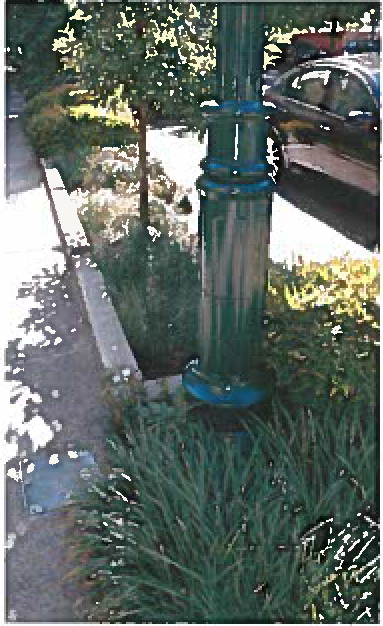
|
6th Avenue Golf Club Road Pacific Avenue Other streets Infill block site area |
|
Urban Mixed Use Type B (Curb Extensions/Bulb Outs and Sidewalk) Site Applicability: For urban sidewalks which include curb extensions, such as at corner curb ramps. Applicable LID Facilities: Bioretention in planters with native and drought tolerant vegetation are preferred. Permeable paving is the preferred surfacing for sidewalks where feasible. Rainwater harvesting to manage roof runoff is encouraged. Vegetated roofs are encouraged for roofs that serve as a gathering space. Design Considerations: Designed to provide pedestrian amenities such as aesthetics, seating, and mobility. |
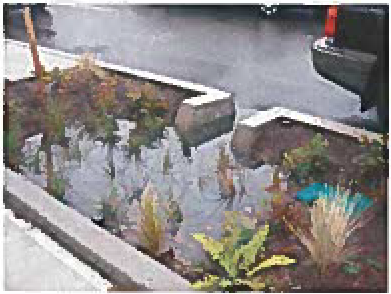
|
Golf Club Road Pacific Avenue Other streets Infill block site area |
|
Urban Mixed Use Type C (Courtyards and Forecourts) Site Applicability: For mixed use and residential courtyards and forecourts. Applicable LID Facilities: Bioretention in planters with native and drought tolerant vegetation are preferred. Permeable paving is the preferred surfacing for sidewalks where feasible. Rainwater harvesting to manage roof runoff is encouraged. Vegetated roofs are encouraged for roofs that serve as a gathering space. Design Considerations: Designed to provide pedestrian amenities such as aesthetics, seating, and mobility. |
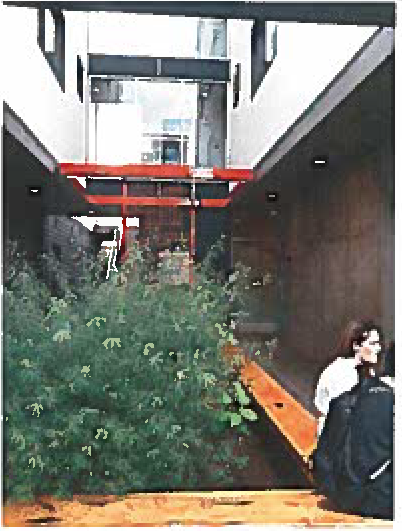
|
Infill block site area |
Urban Residential. In the more residential settings of the Woodland District the function of rainwater detention and stormwater re-infiltration may include LIDA techniques such as green roofs, rainwater harvesting, infiltration planters, flow-through planters, rainwater gardens, and permeable paving.
|
Urban Residential LID Approach |
Example |
Where Permitted |
|---|---|---|
|
Urban Residential Type A (Front Setbacks) Bioretention or rain gardens with native plants suitable for courtyard or forecourt edges or porch-stoop-terrace frontages. May also be used within the horizontal separation zone required for ground floor residential. Permeable paving is the preferred surfacing for forecourt or porch-stoop-terrace frontages where feasible. |
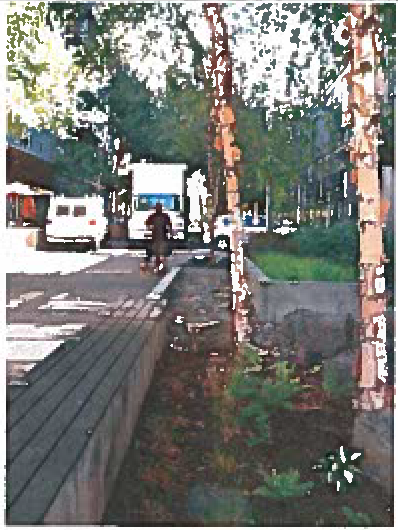
|
Golf Club Road Pacific Avenue Other streets Infill block site area |
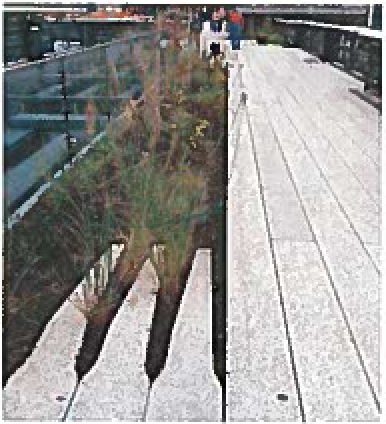
|
||
|
Urban Residential Type B (Street Furnishing Zone) For urban sidewalks in residential areas where there is on-street parking and street furniture. Designed to accommodate pedestrian traffic between parked cars and residential entries. Planted area may be used in conjunction with required street trees and informally planted with native and drought tolerant plants. Permeable paving is the preferred surfacing for sidewalks where feasible. |

|
6th Avenue Golf Club Road Pacific Avenue Other streets Infill block site area |
Through Connections and Parking Lots. Parking lots, private streets, and multi-use paths should be designed to detain and redirect stormwater runoff. LIDA design includes bioretention in vegetated swales, flow-though planters, and rainwater gardens. Pervious pavement is an effective alternative to conventional curbs, catch basins, sewer pipes, and treatment facilities.
|
Parking Lot LID Approach |
Example |
Where Permitted |
|---|---|---|
|
Parking Lot LID Approach A (Perimeter Landscaping) Bioretention swales, bioretention planters or rain gardens with native plants wherever a parking lot abuts a street or through connection. Permeable paving is the preferred surfacing for parking lots where feasible. |

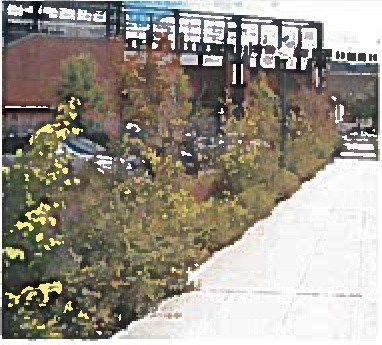
|
Pacific Avenue Other streets Infill block site area |
|
Parking Lot LID Approach B (Internal Landscaping) Bioretention swales with native plants. May be used in conjunction with required parking lot tree planting. Permeable paving is the preferred surfacing for parking lots where feasible. |
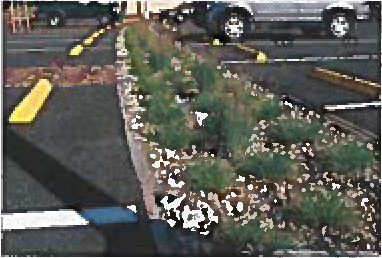
|
Infill block site area |
|
Crossing Description |
Example |
Location |
|---|---|---|
|
Urban Plaza Intersection |

|
|
|
Raise the intersection to the level of the adjacent sidewalks. Tighten intersection curb radii for slower turning speeds for motorized vehicles. Install vertical projections such as bollards and planters to channel the automobiles and increase the security and safety of pedestrians and bicyclists. |
Required 6th Avenue intersection with Golf Club Road1 |
|
|
Use textured paving and/or contrasting colors to promote a distinctive sense of place. Install permeable paving, unit pavers, textured paving, or other distinctive materials or contrasting colors to the flat surface of the intersection plaza. |
Optional Pacific Avenue Other streets |
|
|
Vertical speed control elements shall be marked with a warning sign advising drivers. |
1City is responsible for construction of raised table intersection once Golf Club Road extension is completed. |
|
|
Urban Corner |
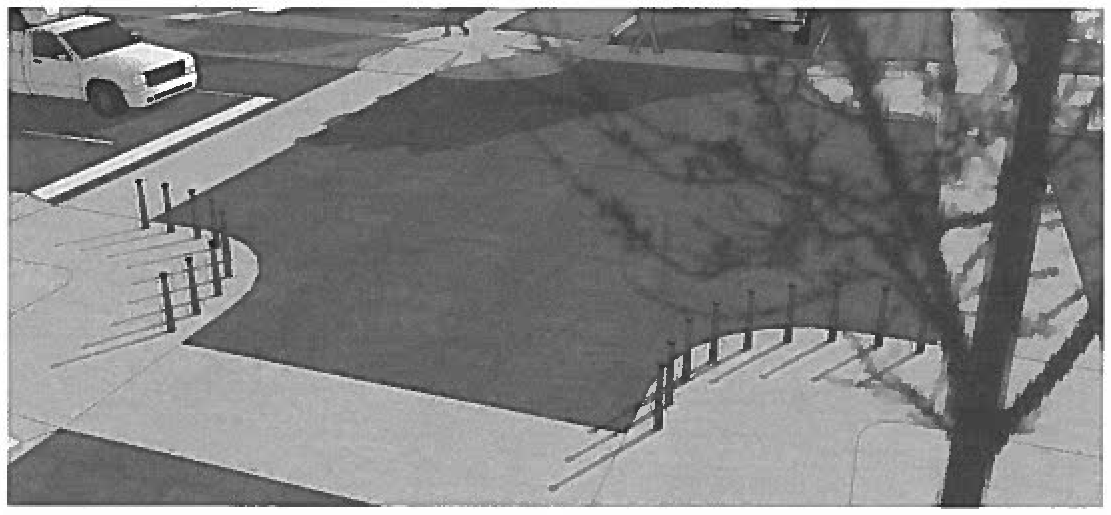
|
|
|
Tighten intersection curb radii and encourage slower turning speeds for motorized vehicles. Eliminate the change in grade between sidewalk and drive lane to prioritize pedestrian movement and mark a unique spot in the Woodland District. Flare the curb to meet the grade of the street along the full extent of the radius of the corner. Use bollards to protect pedestrians from automobile turning movements. |
Required 6th Avenue Golf Club Road between 6th and 7th Avenues |
|
|
Optional Pacific Avenue Other streets |
||
|
Pedestrian Corner |
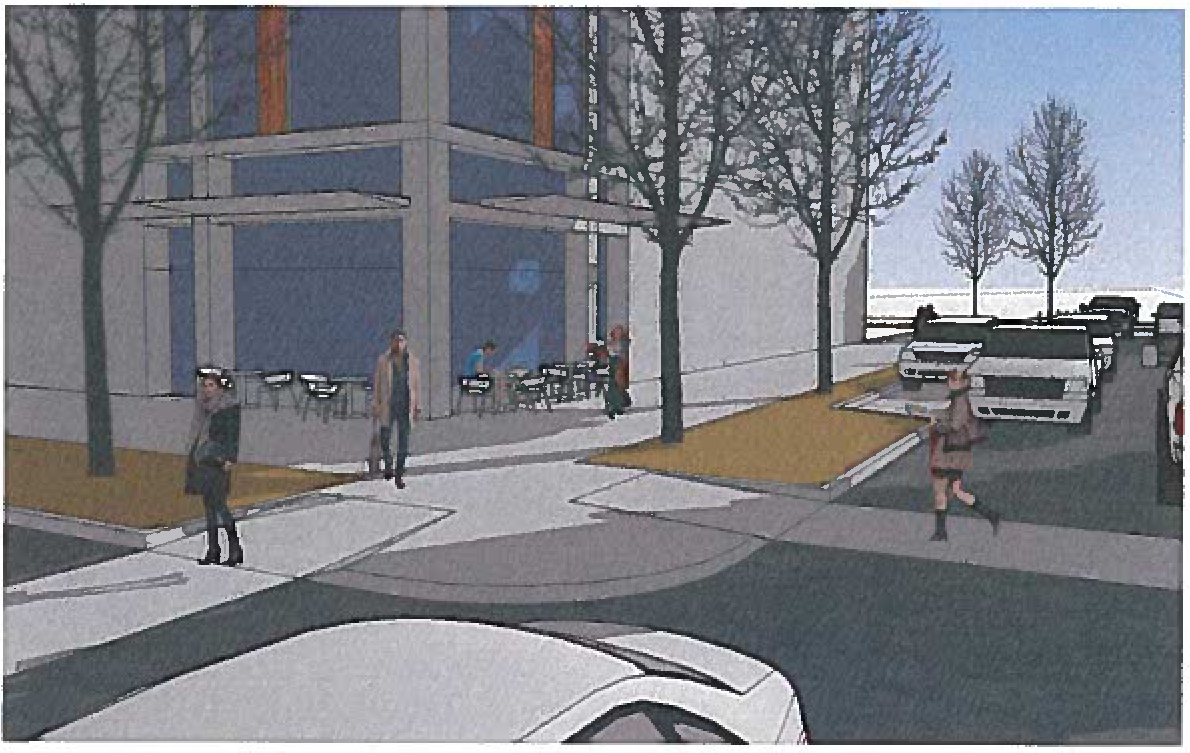
|
|
|
Install curb extensions to visually narrow the street and alert drivers to exercise more care. Place curb extensions to create shorter and safer crossings for pedestrians. Take advantage of curb extensions to increase the available public realm space for street furniture, benches, street trees, and other amenities. |
Required Golf Club Road south of 7th Avenue Golf Club Road north of 6th Avenue Pacific Avenue Other streets Through connections in Woodland Square Subdistrict Through connections in Master Plan Areas |
|
|
Curb extensions should be installed wherever on-street parking is provided. Combine stormwater management features into curb extensions at corners. |
||
|
Install curb extensions at street crossings to support pedestrian safety. Integrate flow-through planters and rain gardens, on-street parking, parklets, and bicycle parking corrals into the curb extension. |
Optional All other streets |
|
|
Urban Mid-block Crossing |
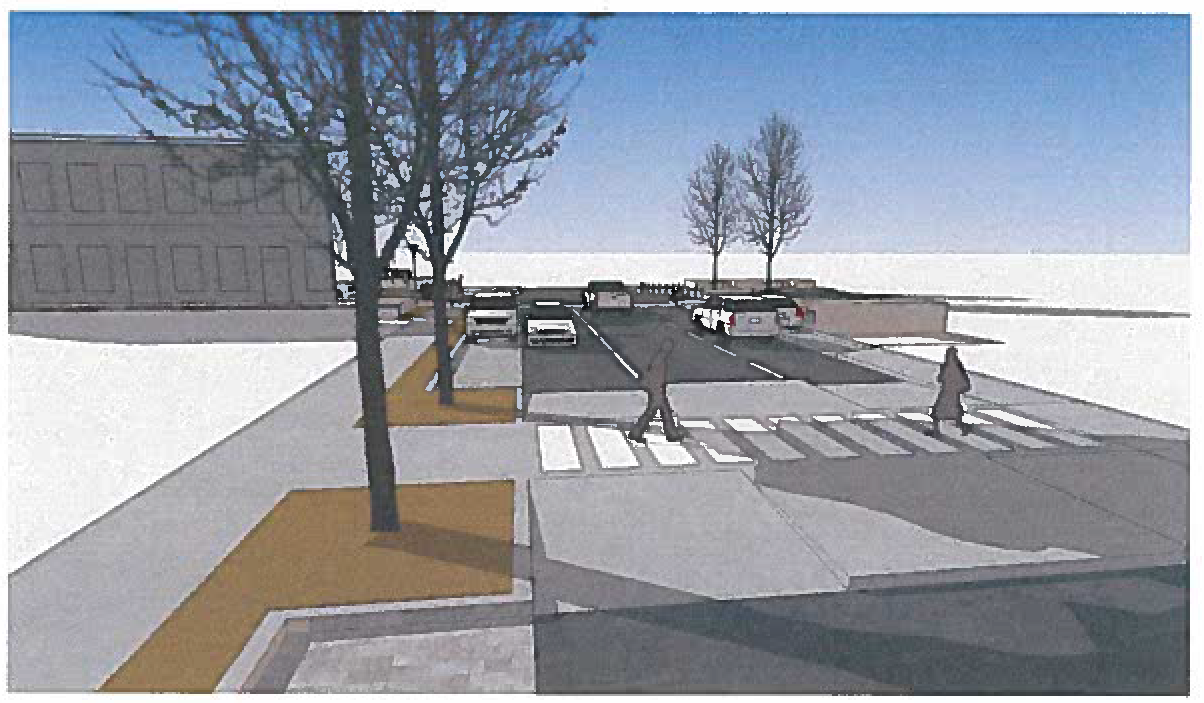
|
|
|
Create shorter and safer crossings for pedestrians. Raise the level of the walkway to match the level of the adjacent sidewalk to prioritize pedestrian crossing and alert drivers to the mid-block crossing. Install permeable paving, unit pavers or other distinctive materials to the flat surface to further define the speed table. |
Required Golf Club Road south of 7th Avenue Golf Club Road north of 6th Avenue Pacific Avenue Other streets within the Woodland Square Subdistrict Other streets within the Master Plan Areas Through connections in Woodland Square Subdistrict Through connections in Master Plan Areas |
|
|
Vertical speed control elements shall be marked with a warning sign advising drivers. |
||
|
Mid-block Crossing with Pedestrian Refuge |
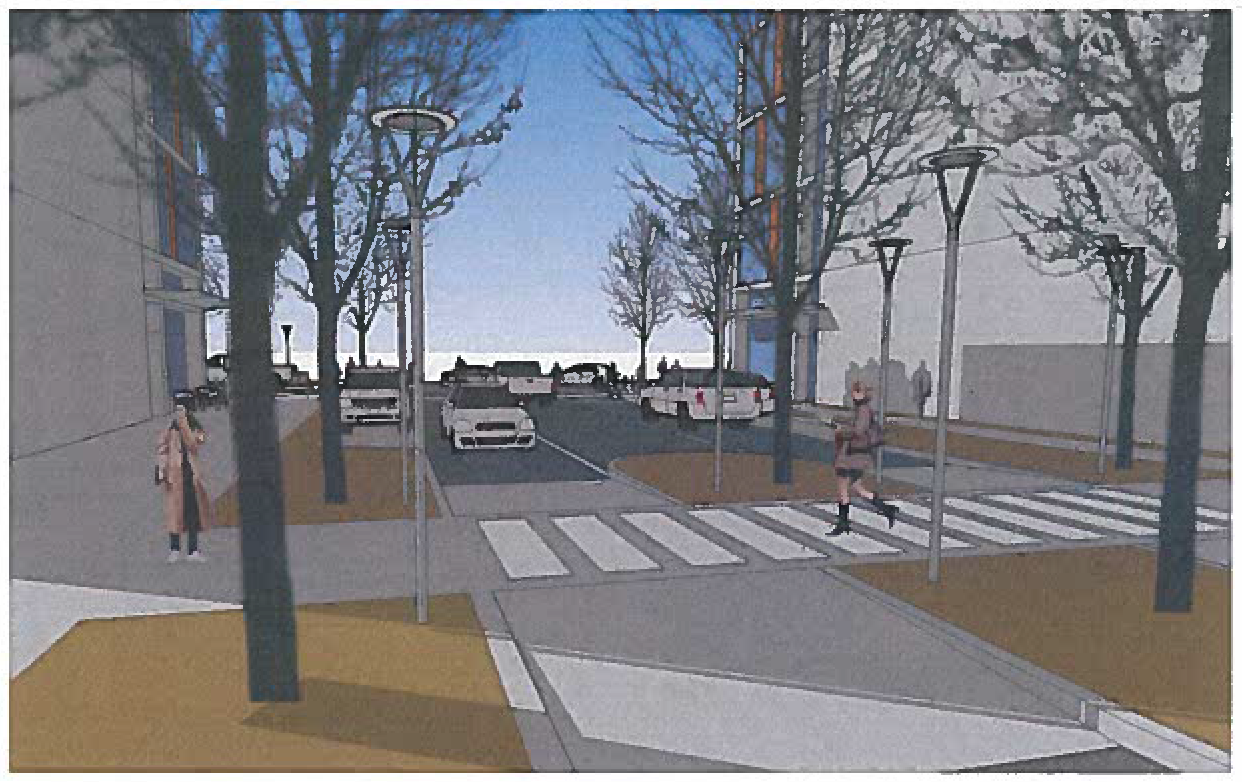
|
|
|
Where streets have more than two travel lanes, pedestrian crossings shall include a pedestrian refuge within the median to provide an additional measure of safety. Incorporate planted beds, flow-through planters and rain gardens within the median island. |
Required 6th Avenue Pacific Avenue |
|
|
Optional Other streets |
|
Traffic Calming Description |
Example |
Where Permitted |
|---|---|---|
|
Urban Woonerf |
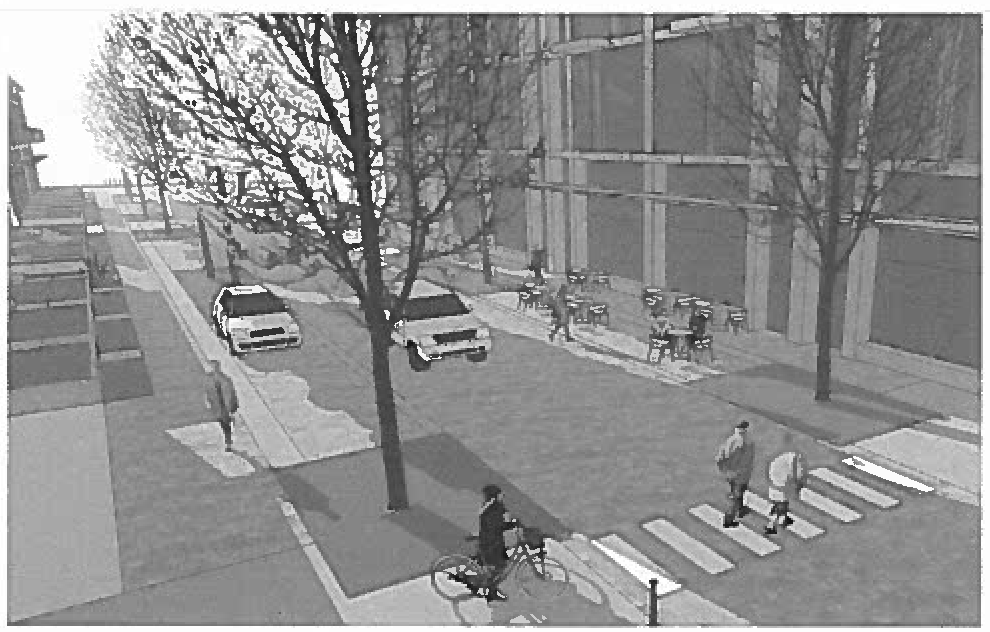
|
|
|
Urban shared space streets function foremost as public space for shopping, commerce, culture, socializing, and recreation. The design speed of an urban shared space street is 18 mph. |
Optional Golf Club Road Other streets Optional, without continuous sidewalk requirement |
|
|
Install flush textured or pervious pavement to reinforce the priority of the pedestrian. Special pavements, especially unit pavers, shall be selected for regional climate, durability, and maintenance. Sidewalks and street are installed at the same elevation (level). Align drainage channels with center or along the flush curb of the urban shared space streets. |
||
|
Provide continuous sidewalks on both sides of urban shared space streets with three distinct zones: frontage zone, pedestrian through zone, and street furnishings zone. Install street furniture, including bollards, benches, planters, and bicycle parking to functionally separate cars from the pedestrian realm of the sidewalk. Provide on-street curbside parking.1 |
1Through connections are exempt from the requirement for continuous sidewalk and on-street parking. |
|
|
Curbed Street--Bulb-outs |
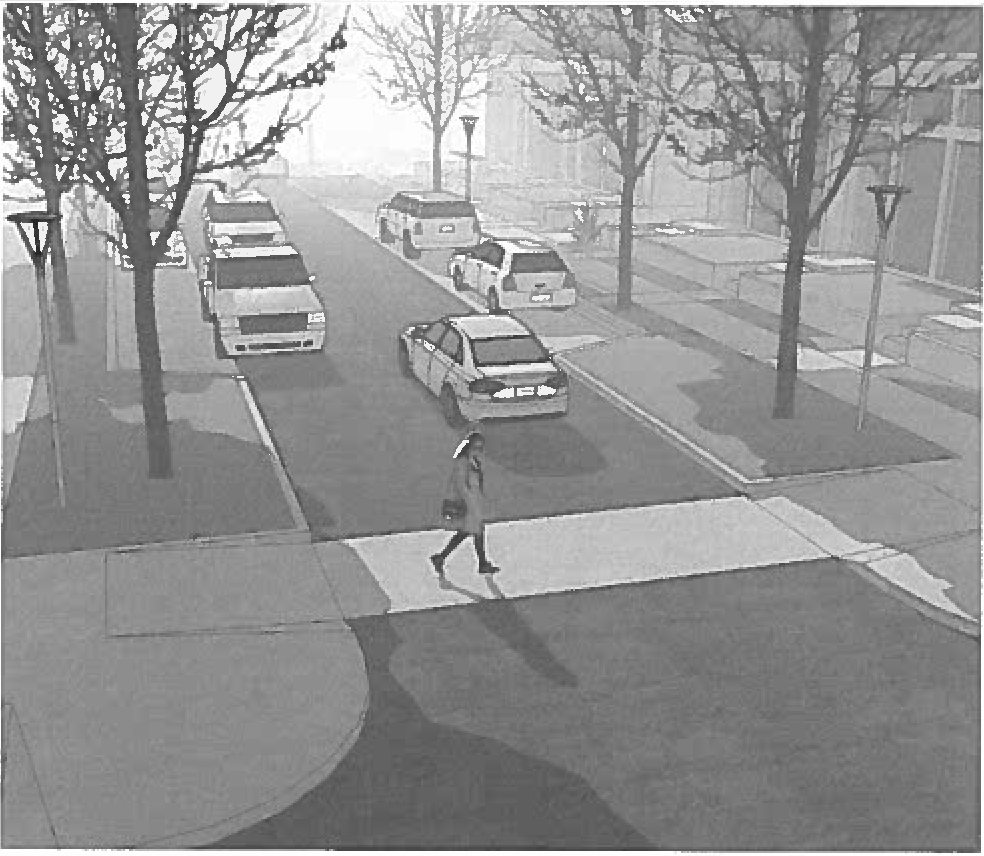
|
|
|
Curb extensions are used at intersections to shorten the distance between curbs at pedestrian crossings. Use curb extensions to integrate parking lane materials and treatments, such as permeable paving. Install curb extensions wherever on-street parking is integrated to increase visibility, reduce the crossing distance, provide extra queuing space, and allow for enhancements, such as seating or greenery. Combine stormwater management features such as bio-swales or rain gardens with curb extensions to reduce the impervious surface area of the street. |
Required 6th Avenue intersection with Golf Club Road Pacific Avenue Other streets |
|
|
Provide continuous sidewalks on both sides of curbed streets with four distinct zones: frontage zone, pedestrian through zone, street furnishings zone, and curb zone. Install street furniture, including bollards, benches, planters, and bicycle parking to functionally separate cars from the pedestrian realm of the sidewalk. |
||
|
Parklets are ideal for curbed streets with active storefronts, foot traffic, and retail activity. |
1Through connections are exempt from the requirement for continuous sidewalk and on-street parking. |
|
|
Provide on-street curbside parking. |
||
|
Queuing Street (Yield Street) |
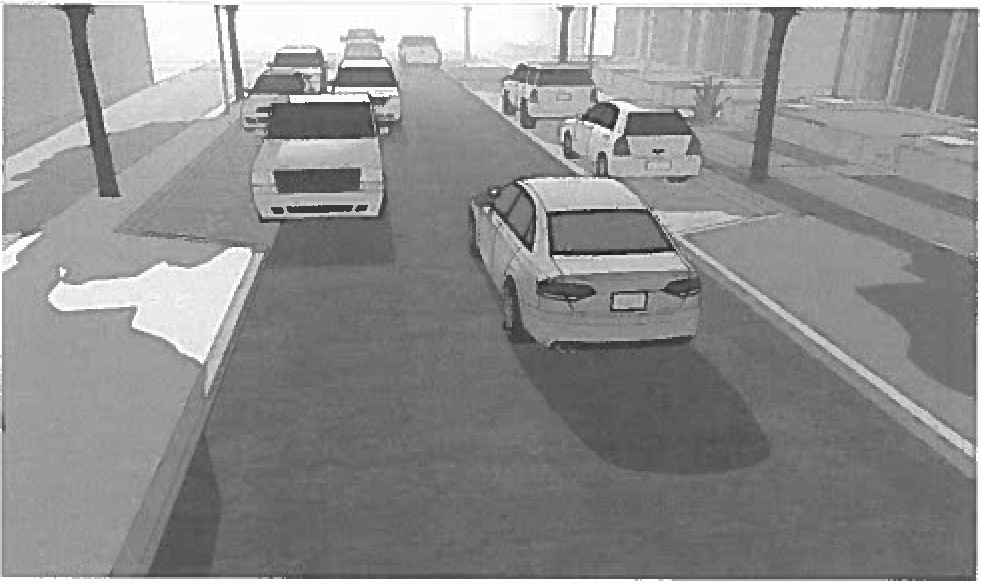
|
|
|
Local streets in residential neighborhoods are also spaces for play and leisure. Provide safe and inviting places to walk with direct access to destinations. |
Optional Golf Club Road Other streets |
|
|
Two-way yield streets are suited to residential areas where drivers are expected to travel at low speeds. |
||
|
Provide continuous sidewalks on both sides of queuing streets with four distinct zones: frontage zone, pedestrian through zone, street furnishings zone, and curb zone. Install street furniture, including bollards, benches, planters, and bicycle parking to functionally separate cars from the pedestrian realm of the sidewalk. |
||
|
Driveways shall be constructed to eliminate intrusion upon the sidewalk. Sidewalk materials and grade shall be maintained across driveways. |
||
|
Use the planted furnishings zone of the sidewalk for street trees, bio-swales, and rain gardens. |
||
|
Install curb extensions at intersections to maintain safe travel speeds and reinforce the residential nature of the street. |
||
|
Install curb extensions at mid-block to slow traffic speeds and add public space. Install vertical speed control devices like raised crosswalks and mid-block crossings to encourage safe speeds and meter through traffic. |
1Through connections are exempt from the requirement for continuous sidewalk and on-street parking. |
|
|
Provide on-street curbside parking. |
||
|
Chicane Street |
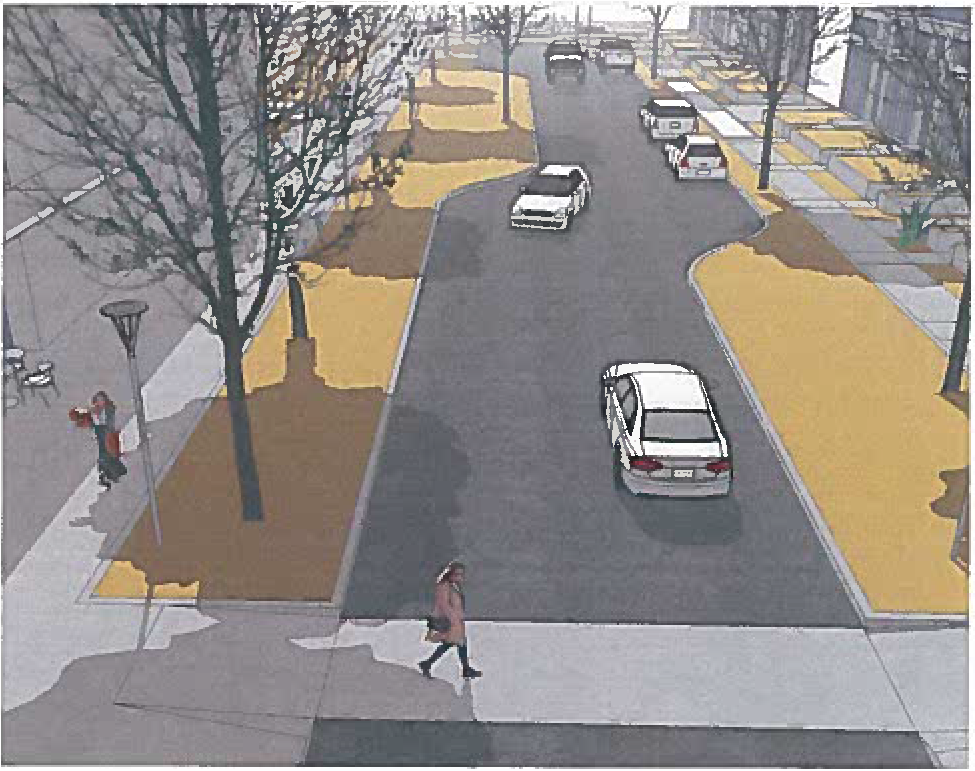
|
|
|
Chicane streets are suited to residential areas where drivers are expected to travel at low speeds. |
Optional Golf Club Road Other streets |
|
|
Driveways shall be constructed to eliminate intrusion upon the sidewalk. Sidewalk materials and grade shall be maintained across driveways. |
||
|
Use the planted furnishings zone of the sidewalk for street trees, bio-swales, and rain gardens. |
||
|
Install curb extensions at intersections to maintain safe travel speeds and reinforce the residential nature of the street. |
||
|
Provide continuous sidewalks on both sides of chicane streets with four distinct zones: frontage zone, pedestrian through zone, street furnishings zone, and curb zone. Install street furniture, including bollards, benches, planters, and bicycle parking to functionally separate cars from the pedestrian realm of the sidewalk. |
1Through connections are exempt from the requirement for continuous sidewalk and on-street parking. |
|
|
Install curb extensions at mid-block to slow traffic speeds and add public space. Install vertical speed control devices like raised crosswalks and mid-block crossings to encourage safe speeds and meter through traffic. |
||
|
Woonerf--Residential |
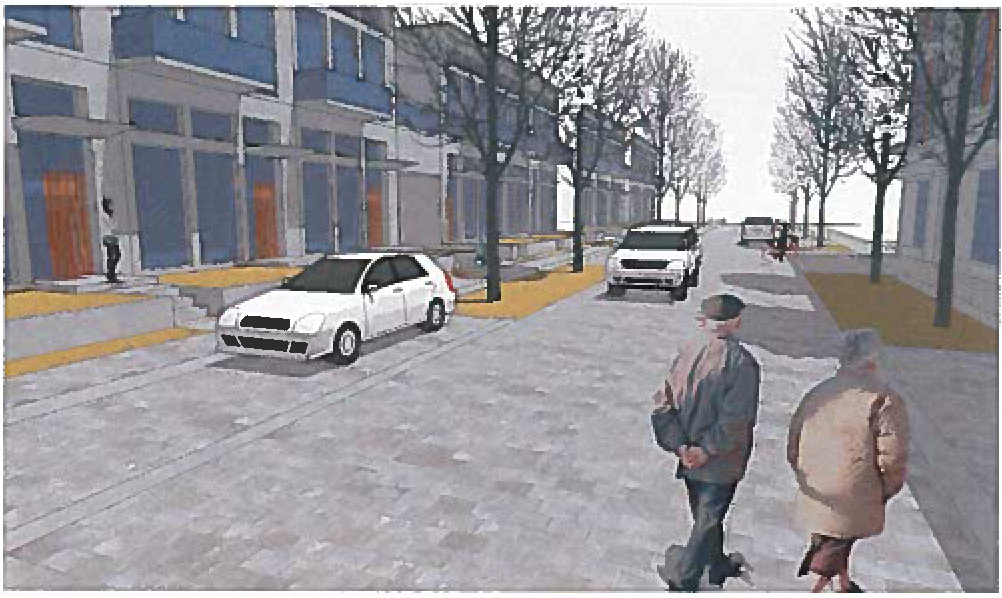
|
|
|
Woonerf--residential streets are low-volume residential streets functioning foremost as public space for recreation, socializing, and leisure. The design speed of a woonerf--residential street is 12 mph. Identify woonerf--residential streets with signage indicating that motorists must yield and the pedestrian has priority of movement. Mark entrances to woonerf--residential streets with tactile warning strips that alert both drivers and pedestrians. Install flush textured or pervious pavement to reinforce the priority of the pedestrian. Special pavements, especially unit pavers, shall be selected for regional climate, durability, and maintenance. Sidewalks and street are installed at the same elevation (level). Align drainage channels with center or along the flush curb of the woonerf--residential street. |
Optional Other streets |
|
|
Provide continuous sidewalks on both sides of woonerf--residential street with four distinctive zones: frontage zone, pedestrian through zone, street furnishings zone, and curb zone. Install street furniture, including bollards, benches, planters, and bicycle parking to functionally separate cars from the pedestrian realm of the sidewalk. |
1Through connections are exempt from the requirement for continuous sidewalk and on-street parking. |
|
|
Stagger blocks of on-street parking and landscaping to create a chicane effect. Install street furniture, including bollards, benches, planters, and bicycle parking to functionally separate cars from private space. |
(Ord. 1496 §66, 2016; Ord. 1487 §3 (part), 2016).